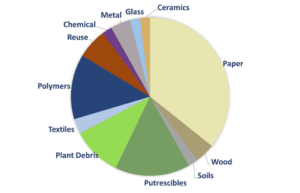Accelerating the transition to a circular economy is both feasible and cost-effective, primarily centered on fostering new paradigms and spearheading change. Encouragingly, many companies have been addressing waste reduction through methodologies like Lean Six Sigma over the past few decades. The principles of Zero Waste resonate closely with my Six Sigma black belt training, particularly the DMAIC process (Define, Measure, Analyze, Improve, Control). This article, the third in a ten-part series, provides practical insights for business leaders eager to embark on this transformative journey.
Understanding the Circular Economy
At its core, the circular economy is anchored in three fundamental principles: eliminating waste and pollution, maintaining continuous use of products and materials, and regenerating natural ecosystems. This approach diverges dramatically from the traditional linear model of extract, use, and dispose, promoting a cycle of reuse that benefits both businesses and the environment.
Steps to Establish a Baseline for Transition
- Conduct a Comprehensive Waste Characterization Audit & Materials Flow Analysis
The first step towards circular transformation is to understand your existing waste management practices thoroughly. This involves conducting a detailed waste characterization audit to identify the types and volumes of waste your operations generate.

Equally important is a materials flow analysis, which helps pinpoint the origins and pathways of waste across your supply chain.
- Action: Collaborate with waste management professionals to carry out these assessments.
- Strategy: Analyze the collected data to identify critical areas where waste reduction is possible and profitable.
- Tactic: Utilize this information to establish baseline metrics and objectives for waste reduction, setting a clear timeline (e.g., 24 months) for achieving zero waste certification.
- Engage Stakeholders and Build Awareness
Securing the commitment of all company stakeholders is essential for a successful transition. This includes not only your employees but also suppliers and customers, all of whom play a pivotal role in your supply chain’s circular transformation.
- Action: Organize educational workshops and training sessions to foster a deeper understanding of circular principles.
- Strategy: Develop and disseminate informative materials that emphasize the economic and environmental benefits of transitioning to a circular economy.
- Tactic: Engage actively with suppliers and customers to align on shared goals and collaborate on sustainable practices.
Looking Ahead
Embracing a circular economy model offers substantial benefits, including reduced waste, lower operational costs, and enhanced corporate sustainability. This strategic pivot is not just about corporate responsibility but also about positioning your business as a forward-thinking leader in sustainability.
Stay tuned for our next piece, which will delve into Design for Circularity, focusing on how businesses can innovate product design with sustainability at its core, setting new standards for functionality and environmental responsibility.
This journey towards a circular economy is not just a path to compliance but a strategic move towards a sustainable and profitable future. By taking these initial steps, your company can effectively map its transition and foster a more sustainable business model that resonates with modern consumers and preserves our planet for future generations.
About EcoTrax
EcoTrax is a technology-enabled supply chain solutions company focusing on a mission-critical yet under-resourced area of supply chains – the recyclables, reusables, and waste produced by distribution centers. Our purpose-built platform and team of industry experts deliver solutions that increase the value and sustainability performance of recyclables (pallets, OCC bales, plastics, food waste) while simplifying and modernizing the management of returnable containers (totes, pooled pallets, etc.). We digitally integrate and synchronize all internal stakeholders and external partners and automate workflow through a single platform. This single point of truth reveals real-time, actionable data and insights, reducing environmental impact while improving fiscal performance.
